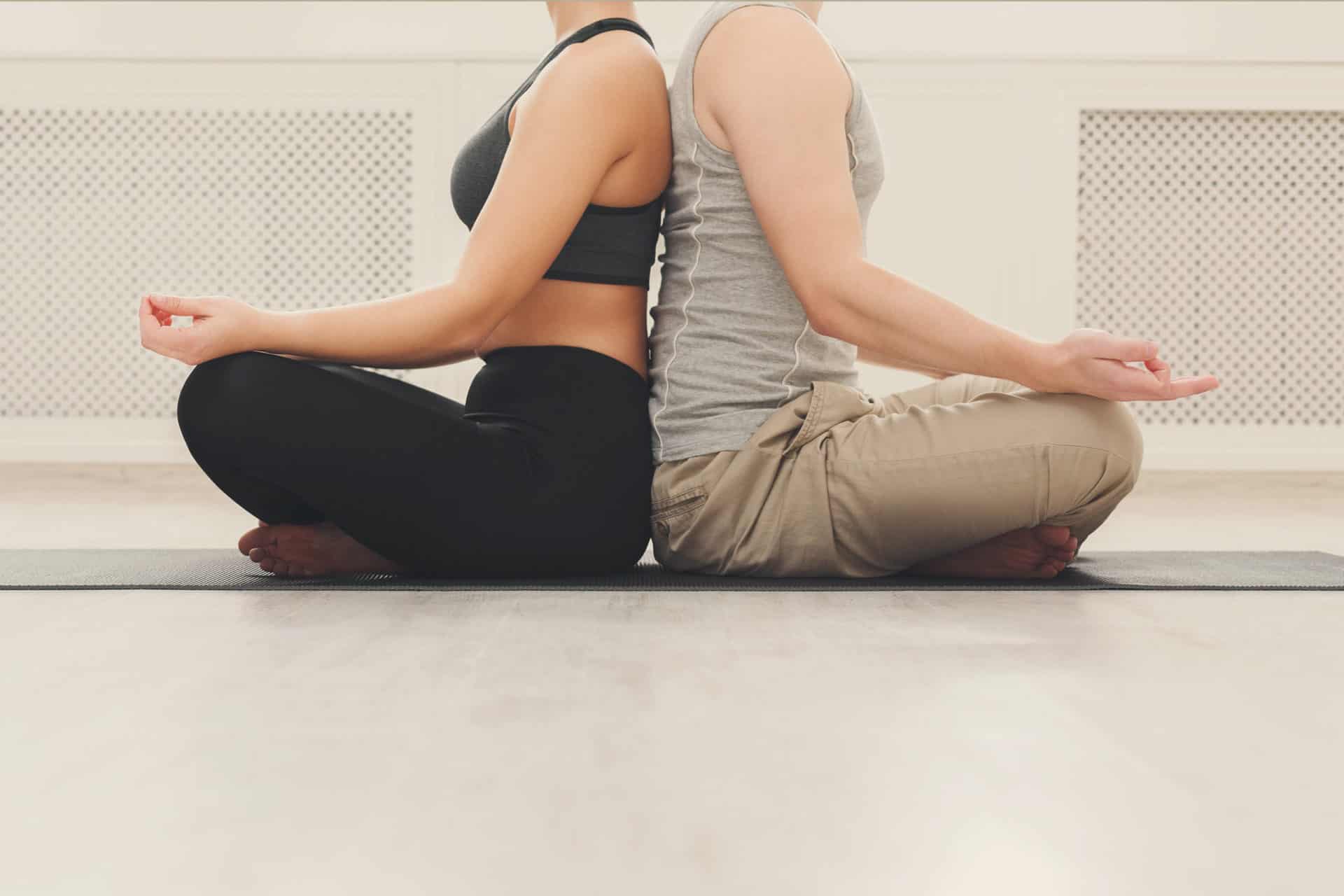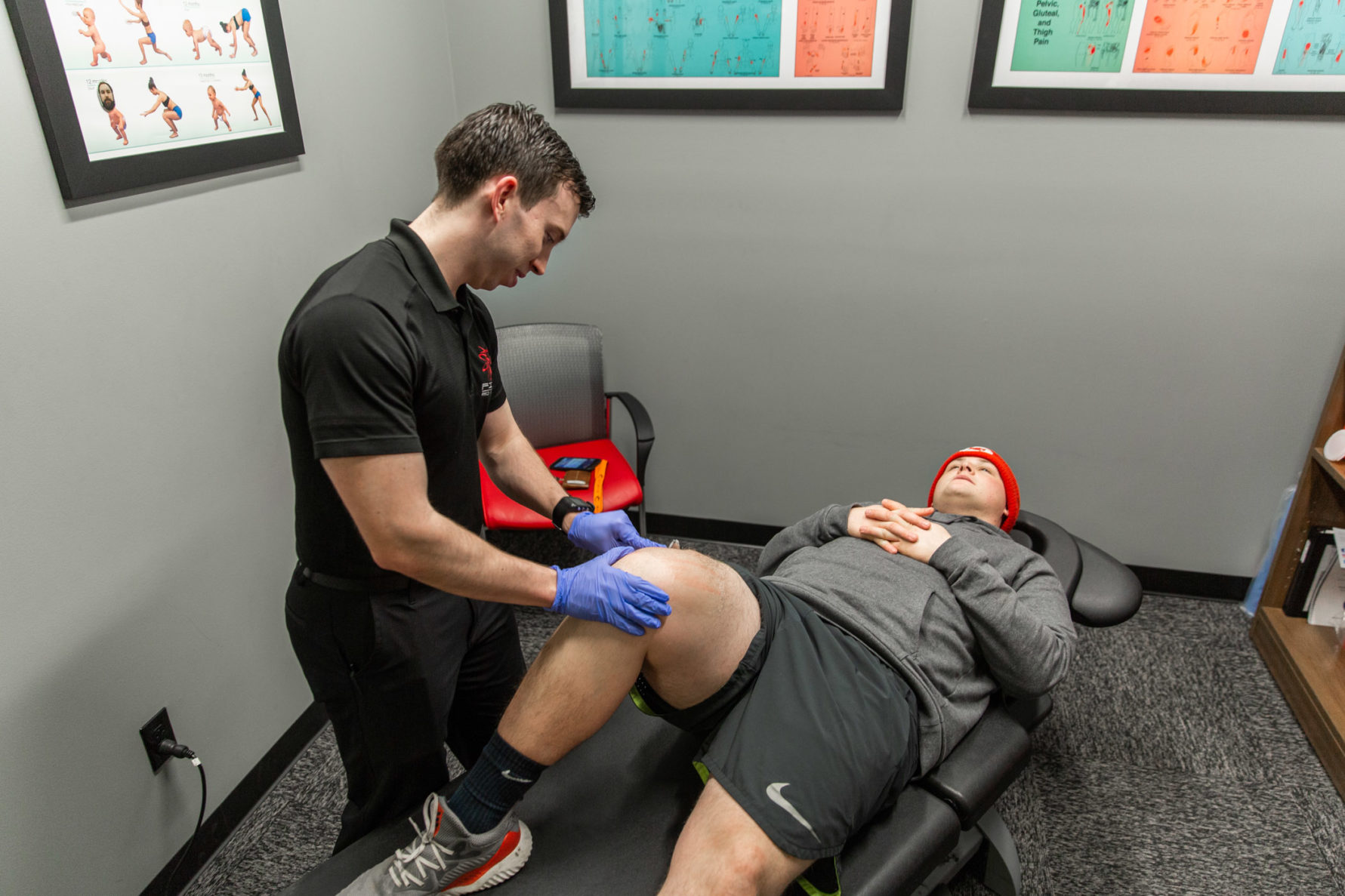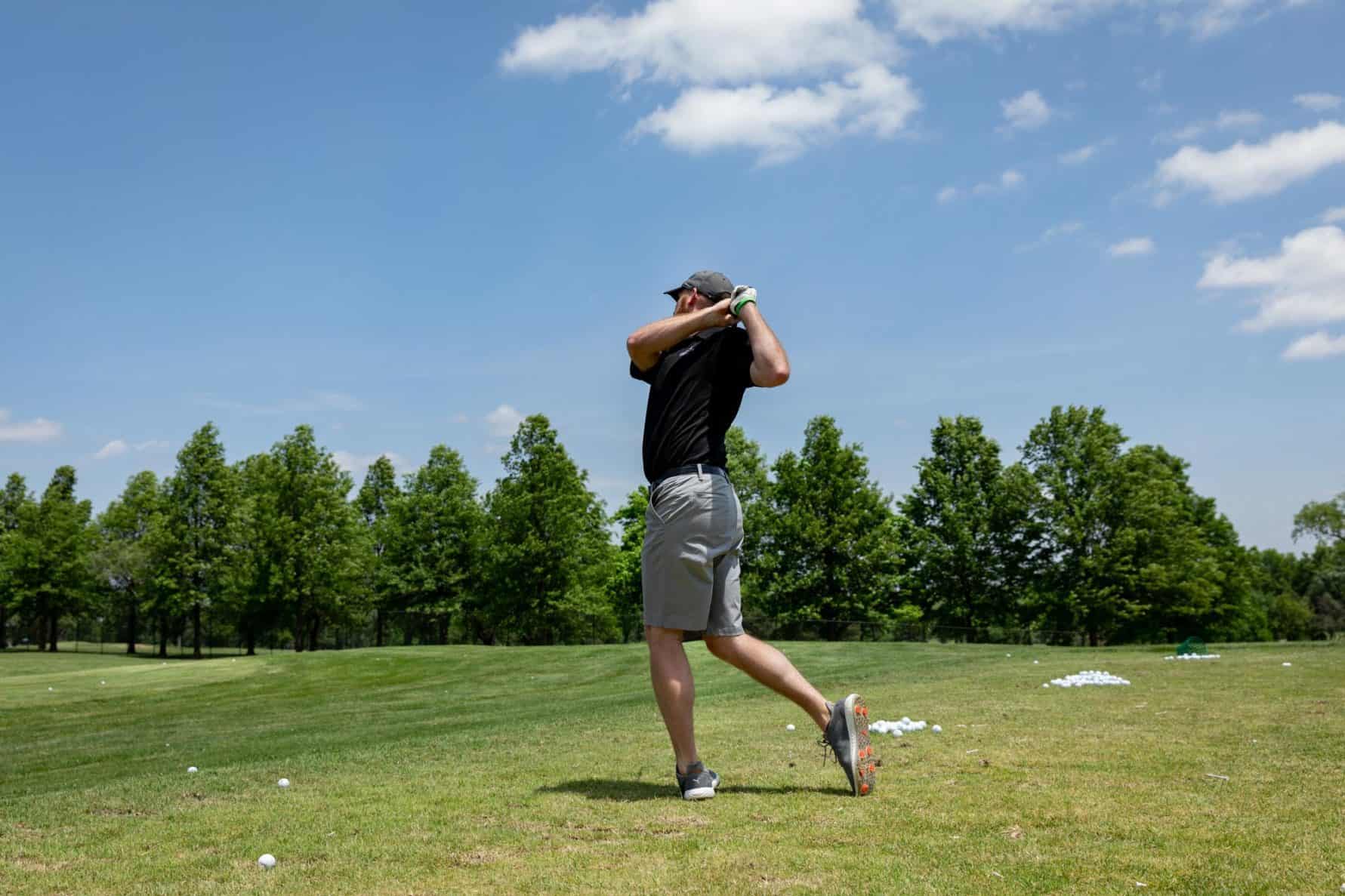How to Keep Your Back Healthy and Functional
26 February 2020 — Chiropractic, Lifestyle, Physical Therapy, Preventative Care

If you haven’t heard before, learning how to keep your back healthy and functional is crucial for your overall health. With all the twisting, standing, sitting, running, lifting, (the list can go on and on) that you do, it’s not wonder that your spine is… well… the backbone of physical wellness.
Consider this: According to a study by Mayo Clinic Research, back pain was the third most common reason people visit a doctor (right behind osteoarthritis and joint injuries). Furthermore, as much as 85% of adults experience back pain at some point in their lives.
That’s why our team of physical therapists and chiropractors at F.I.T. Muscle & Joint Clinic make sure each patient is fully aware of the importance of spine health. For more information, keep reading on how to keep your back healthy and functional.
Get to know the anatomy of your spine
Oftentimes, many people don’t understand the basic parts of your spine and why it’s so important for back health.
In general, you spine has three main functions:
- Protecting the spinal cord and its nerve roots
- Providing support and balance to keep you upright
- Allowing for flexible motion
Your spine isn’t just some long bone that extends from the bottom of your head to your lower back; it’s actually a collection of 24 semi-rigid vertebrae separated by intervertebral discs. Those discs cushion the bone and stop them from rubbing together, and they also provide shock absorption during impact and protect the nerves which run through the spine..
Those vertebrae are divided into three sections—cervical (upper spine), thoracic (mid spine), and lumbar (lower spine). Together they create a natural “S” shape, with the curve being inward at the cervical region, extending out in the thoracic region, then curving back in at the lumbar region. Strong muscles and ligaments keep that structure in check and stable, which is why back pain often stems from muscle weakness (don’t worry, we’ll talk about how to strengthen those muscles later).
Of course there’s more detail that goes into spine anatomy, but at least now you know the basics. Now onto the good stuff.
Why does my back hurt?

There are a variety of factors that could lead to an unhealthy spine and decrease its functionality. That’s why it’s important that you always speak to a physical therapist or physician to help you narrow down the exact cause of your back pain.
With that in mind, common reasons people have back pain include:
- Lack of mobility in surrounding muscles
- Improper motion and form
- Bad posture
- Weak core
- Muscle imbalance
- Immobility
Lack of mobility in surrounding muscles
Your spine depends on the strength of surrounding muscles and ligaments. Since your pelvis acts as your spine’s foundation, a lack of mobility in your hips, hamstrings, and thoracic spine can cause your lumbar region to overcompensate. In turn, that overcompensation can lead to a pelvic tilt, which affects the shape of your spine.
Quick tips to avoid a pelvic tilt
-
-
- Avoid sitting for long periods of time
- Practice regular exercise (mobility exercises and strength training)
- Maintain proper breathing patterns
-
Will Lifting Weights Hurt My Back?→
Improper motion and form
When exercising, you want to make sure you’re using proper form to keep your back healthy and functional. Whenever you’re performing exercising like deadlifts, planks, and squats, make sure you're not arching your back. Lumbar flexion during those exercises could lead to muscle strains and back injuries.
Bad posture
An important aspect of a healthy spine is good posture. Bad posture causes more stress on your spine, which in turn can lead to pain and injury. Wherever you’re standing (or sitting), make sure you have a proud chest, shoulders back, keep your head in line with your spine, and breathe with your belly. Even though it makes it seem more comfortable to slouch, trust us, your back will thank you in the long run.
Weak core
Having strong abs isn’t just to help you get a six-pack figure; it’s more importantly meant to stabilize your body, including your spine. Stability keeps your body in control and inhibits unwanted movements that could do your body harm. A weak core may lead to too much spinal flexion and/or extension, which leads to an unhealthy back and pain.
Muscle imbalances
All too often, people neglect strengthening the muscles that run along the back end of the body (from the neck to the ankles). To avoid this, incorporate both pushing and pulling exercises. This way, you’re balancing out the posterior and anterior sides of your body.
Inactivity
There was a time when people believed that the best way to avoid back injuries is to just not move. Now, we know that’s simply not the case. Mobility is key to keeping your back healthy and functional. In fact, without it, your discs begin absorbing more fluid, causing them to become tighter and decrease your range of motion.
Exercises for a healthy spine
Since mobility is crucial for keeping your spine in tip-top shape, it’s great to implement certain exercises that promote a strong back.
Hip Hinge
Targets: Gluteus maximus, hamstrings, low back muscles, hip adductors, and quadriceps muscles. The core muscles are also recruited during this exercise.
The hip hinge is an exercise designed to primarily target the posterior chain including the glutes, hamstrings, and low back. This exercise also relies on your core or abdominal muscles to assist in the movement.
The goal is to hinge through your hips instead of rounding through the low back while maintaining a neutral spine. If your lower back is doing the hinging or bending, this will cause pain and reduce the range of motion of the movement. Repeat this movement, first with no weight, about 10 times or to your tolerance. Once you’ve mastered the movement you can begin adding weight and eventually progress to movements such as deadlifts and kettlebell swings that require a proper hip hinge.
Benefits:
The hip hinge is a fundamental movement pattern that helps you perform essential tasks such as bending over and picking things up.
Cat/Cow
Targets: Neck, thoracic (mid back) spine and lumbar (low back) spine.
This exercise, which is also a yoga pose, involves moving the spine from a rounded position (flexion) to an arched one (extension). Each movement is done in conjunction with either an inhalation (flexion) or exhalation (extension) of the breath. This pose is achieved by beginning on all fours in a quadruped position and alternating between rounding the spine up and dropping the head down and arching the back and lifting the chest and head up.
Benefits:
This exercise may be done as a part of a warmup sequence, a relaxation sequence, or as an exercise to prevent back pain and improve posture and balance.
Wall Slides with resistance band
Targets:Scapular stabilizing muscles (the muscles between the shoulder blades in the back) and the rotator cuff muscles in the shoulder
Begin with your forearms shoulder width apart and place them on the wall. Bend your elbows at 90 degrees and keep your wrists inline with your elbows. Keeping your forearms in contact with the wall and beginning with the right arm, slide your forearm out to the side without losing contact with the wall and without shrugging the shoulders. Return the forearm to its beginning position. It is important to keep your shoulder blades tucked “down into your back pockets” in order to activate the proper scapular stabilizing muscles around the shoulder blades in the back. Repeat on the left side. Aim for 10 reps on each side or to your tolerance.
Benefits:
This exercise is great for improving stability of the shoulder blades, strengthening the muscles that control them and encouraging mobility through the shoulder joint.
The Importance of Joint Stability→
Foam Rolling
Targets: Mobility-restricted joints throughout the spine, primarily in the thoracic spine/mid-back.
You can do this exercise with many parts of the body, but it can be especially beneficial for improving mobility and range of motion through the mid back (thoracic spine). This is done by lying on your back on a foam roller. Begin with your hands interlaced behind your head like you are going to do a crunch and position the foam roller just below the base of your neck. Bend your knees and make sure your feet are flat on the floor. SLOWLY roll the foam roller down your spine while tensioning up like you’re performing a crunch to create tension evenly down the spine. Stop before you get to the low back. Roll back up and repeat as needed.
Benefits:
Similar to how a chiropractic adjustment works, foam rolling can improve mobility through the spine which can decrease pain, improve range of motion and increase the quality of your workouts.
Tips to keep your back healthy and functional
It’s never too late to practice good habits in your everyday life to maintain a healthy spine. You don’t need heavy equipment or anything fancy; it’s all about being more conscious and aware of your movements and body. Here are a few tips on how to keep your back healthy.
Tip #1: Get up and get moving
We strongly believe that staying active is one of the best ways to avoid back pain and injury. In many cases, back pain comes from inactivity. Plus, you don’t have to do a lot all at once. We actually recommend taking it slow and giving your body time to adjust. For most people, that’s just 30 minutes a day three times a week.
Tip #2: Implement ergonomics at work
Ergonomics is a way to maximize comfort in the workplace. If you can, get a chair that has good lumbar support. You can also switch from standing up and sitting down so your body doesn’t stay stagnant for eight hours straight.
Tip #3: Sit with purpose
Even when you’re sitting, you don’t want to slouch or hunch over. Make sure your feet are firmly situated on the ground, and keep your knees at hip level. At work, keep your monitor straight ahead so you don’t have to strain your neck to see. Even better, we encourage a standing desk.
Tip #4: Bend from your legs
Whenever you need to lift something, be careful not to bend rounding your low back. This causes extra strain on your back, and you could really hurt yourself. Before lifting, try to gauge how heavy the item is, keep a wide stance, then bend your legs and use those muscles, with good core pressure and a proper hip hinge to lift (without arching your back).
Tip #5: Be cautious doing household chores
As spring starts to roll around, more and more people commit to the ever-popular (and sometimes very necessary) “spring cleaning” tasks. Whenever you’re doing activities like vacuuming, mopping, or raking, make sure you’re standing tall and keeping your elbows close to your body and bending at the hips instead of rounding your back when bending over
How to Protect Your Back While Doing Yard Work→
If you have to clean something that’s lower to the ground, get a short stool or chair instead of arching your back. That way you can keep your spine as neutral as possible while still making sure you get those hard-to-reach spots.
Let F.I.T. Muscle & Joint Clinic help with your back needs
If you’re in the Kansas City area, our expert team of chiropractors and physical therapists is here to help you learn how to keep your back healthy and functional. We’re dedicated to making sure your joints and muscles are in tip-top shape at all times.
Have a back injury?
Whether you’re suffering from joint issues and need chiropractic rehabilitation exercises or need physical therapy services, F.I.T. Muscle & Joint offers a wide-range of services to get you back on track.
Contact us Schedule an appointment



